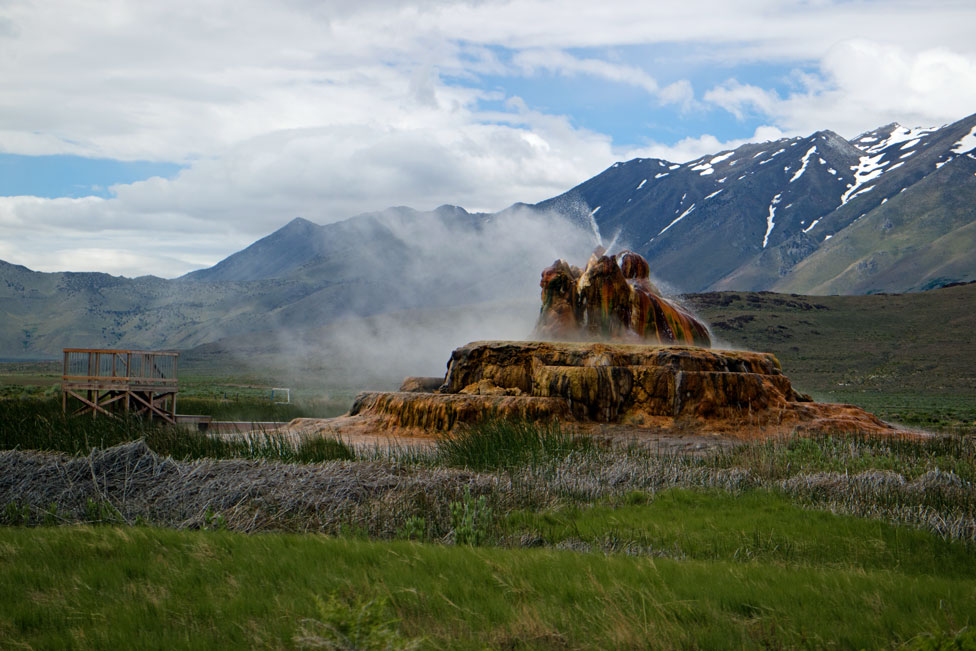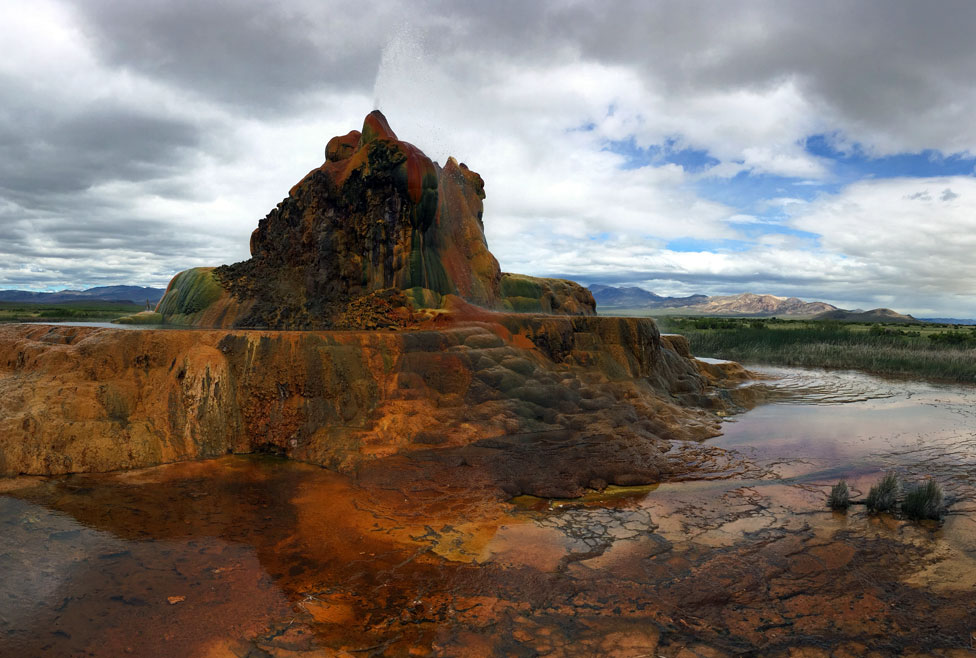Science Trip: Fly Geyser
The Washington Post
By Erin E. Williams
August 16, 2019
Water. Steam. Massive Technicolor mounds. A bizarre mistake rises from the ground here, between the endless desert and mountains of remote northwestern Nevada.
This place, Fly Geyser, is undeniably weird. And it comes with a story to match, one that begins in the early 1900s when local homesteader Walt Parker drilled a well only to abandon it when he discovered hot water. Several decades later, a geothermal company or government agency — nobody really seems to know — tried tapping the same source. The water wasn’t hot enough for its needs, so the second well got capped. Poorly.
Pressurized water has been escaping ever since and sculpting Tolkienesque formations from calcium carbonate and silica. Today, the geyser looms 20 feet tall and nearly 40 feet across.
In 2016, Burning Man Project bought the 3,800-acre ranch that surrounds Fly Geyser. The freewheeling, free-spirited festival’s organizers partner with Friends of Black Rock-High Rock, a nonprofit organization devoted to helping people learn about and explore the area. For $40, staff and volunteers provide three-hour guided tours.
Getting to the site is a journey. It’s 21 miles north of Gerlach, Nev., population 206, which is more than two hours north of Reno. Despite the stark setting, it’s a fragile place, adjacent to thousands of acres claimed for lithium mines and the playa where tens of thousands of Burning Man revelers gather each year. The land has about 150 hot springs, 120 plant species and astonishingly abundant wildlife, including fairy shrimp, feral horses and mountain lions. Yet for most sightseers, the geyser is the star of the show.
A 1.5-mile trek takes them along oasis-like wetlands next to the Black Rock Desert. Fly Geyser plays peekaboo as the trail winds past its two smaller siblings. The 14-foot Wizard Geyser dates from a drilling attempt in 1917; its wizened spire spouted water until Fly Geyser stole its pressure. Last is Will’s Geyser, which looks like a six-foot anthill; locals used to cook hot dogs in it.
The air warms and smells mildly sulfuric. Clouds of steam billow above the reeds, and beyond them, Fly Geyser hisses.
“I like to refer to it as human-started, nature-improved,” explains Sarah Lyon, a Sacramento-area transplant who’s now the lead guide and on-site manager. “The water started coming out because of a man-made device, but everything that has happened to it since that time has been nature.”
Spectators gawk from a boardwalk as scalding water shoots into the air, then crackles and splatters onto textured plateaus. Vibrant colors streak the surface: maroon, green, yellow, orange and red from thermophilic algae and other dissolved minerals.
The geyser grows about six inches taller and wider each year.
It’s something of a cult celebrity, attracting more and more people. “The colors, the height, the spewing water and steam, the oddity of it all,” says Margie Reynolds, a Friends board member. “It’s a crazy, colorful thing in the seemingly barren desert.”
Original at The Washington Post.




